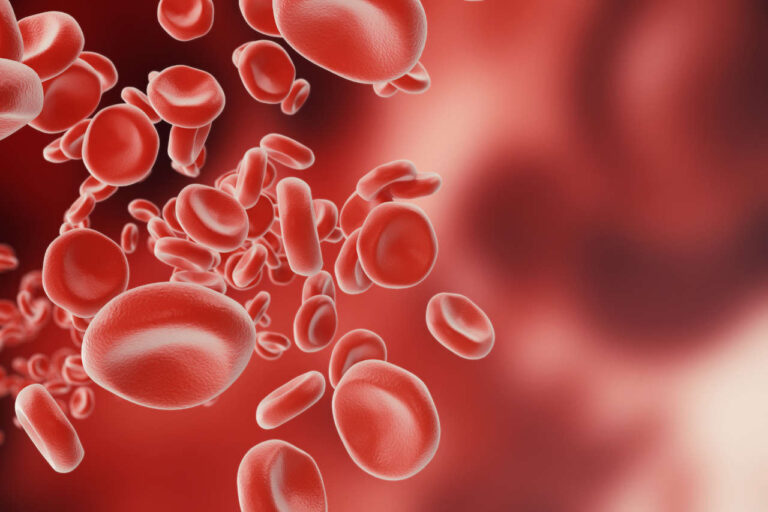
What Is Lyme Disease?
Lyme disease is the most prevalent vector-borne disease in the United States. It is caused by the bacterium Borrelia burgdorferi and, rarely, Borrelia mayonii. It is transmitted to humans through a bite from an infected black-legged tick, commonly known as a deer tick. Recent data from the Centers for Disease Control and Prevention (CDC) estimates that about 476,000 Americans are diagnosed and treated for Lyme disease annually.
The number and distribution of reported cases of Lyme disease have increased over time. In a report by the United States Environmental Protection Agency (EPA), studies have shown climate change has contributed to the spread of the disease in recent years. Deer ticks are most active when temperatures are above 45˚F, and they thrive in areas with at least 85% humidity.
Therefore, warming temperatures associated with climate change create ideal habitat conditions and are driving the spread of Lyme disease.
What Are the Symptoms of Lyme Disease?
Typical symptoms include fever, chills, headache, fatigue, and a certain skin rash called erythema migrans.
If undiagnosed or left untreated, the infection can become a serious health crisis and spread to joints, the heart, and the nervous system.
Early signs and symptoms (3 to 30 days after tick bite):
- Erythema migrans (EM) rash – A characteristic ring-shaped rash often termed “Bull’s eye”
- Occurs in approximately 70% – 80% of infected persons.
- Begins at the site of a tick bite after a delay of 3 to 30 days (average is 7 days).
- Expands gradually over several days, reaching up to 12 inches or more.
- May feel warm to the touch but is rarely itchy or painful.
- May appear on any area of the body.
- Fever
- Chills
- Headache
- Weakness or chronic fatigue
- Swollen lymph nodes
- Muscle and joint aches
Later signs and symptoms (days to months after tick bite):
- Severe headache
- Neck stiffness
- Additional EM rashes on other areas of the body
- Facial palsy
- Arthritis with severe joint pain and swelling, particularly in the knees and other large joints
- Intermittent pain in tendons, muscles, joints, and bones
- Heart palpitations or an irregular heartbeat
- Episodes of dizziness or shortness of breath
- Inflammation of the brain and spinal cord
- Nerve pain
- Shooting pains, numbness, or tingling in the hands or feet
How Do You Get Lyme Disease?
Deer ticks are the common carriers and are primarily found in woodland areas. Because the bite is painless, it is typical that you will not know that you have a deer tick bite unless you see it.
Apart from deer ticks, you can get Lyme disease from other animals and insects. Mosquitoes, mice, and birds can transmit the bacteria either by being infected or by carrying ticks that are infected.
Characteristics and Environmental Information
- This tick-borne disease can affect all ages.
- Park rangers may be prone due to the nature of their work.
- Hikers in woodland areas are also more prone.
- Cases of Lyme disease typically rise during the late spring or early summer.
- Individuals living in states along the northeastern coast are the most at risk.
Removal of the Tick
In most cases, the tick must be attached for 36-48 hours or more before Lyme disease bacteria can be transmitted. This is why it’s very important to remove ticks as soon as possible. If you find a tick attached to your skin, follow these steps to remove it:
- Use a pair of clean, fine-tipped tweezers to grasp the tick as close to the skin’s surface as possible.
- Pull upward with steady, even pressure. Do NOT twist or jerk the tick as this can cause the mouthparts to break off and remain in the skin. If this happens, remove the mouthparts with tweezers. If unable to remove the mouthpart, leave it alone and let the skin heal.
- After removing the tick, thoroughly clean the bite area and your hands with rubbing alcohol or soap and water.
- Never crush a tick with your fingers. Dispose of it properly by putting it in alcohol, placing it in a sealed bag, wrapping it tightly with tape, or flushing it down the toilet.
If you develop a rash or fever within several weeks of removing a tick, see your doctor right away. Be sure to tell your doctor when the bite occurred and where you most likely acquired the tick.
Can Lyme Disease Completely Be Cured?
If treatment with appropriate antibiotics is started in the early stage of Lyme disease, then the patient’s symptoms should subside within a few days or weeks and lead to a full recovery (HopkinsLyme, 2020).
There are cases of chronic Lyme disease with recurrence of symptoms for several months or years. If left untreated, late Lyme disease may no longer be curable and can persist throughout a person’s life in its chronic form.
Can Lyme Disease Go Away on Its Own?
It is possible a person with Lyme disease can clear the infection on their own, but it’s better to be treated because complications that can arise are very serious. For most people, the disease and its symptoms do not resolve without treatment. According to the CDC, there is no vaccination for Lyme disease.
Can You Live With Lyme Disease Untreated?
Without proper treatment, Lyme disease can progress to a chronic state, leading to repetitive or long-term debilitating symptoms such as:
- Lyme arthritis (particularly of the knee)
- Facial palsy or neuropathy
- Pain in the nerves, tendons, muscles, joints, and bones
- Mental fog
- Fatigue
- Lyme carditis (inflammation of the heart)
Pregnancy and Lyme Disease
If you are pregnant and suspect you have contracted Lyme disease, contact your doctor immediately. Untreated Lyme disease during pregnancy can lead to infection of the placenta. Although spread from mother to fetus is rare, it is possible. Fortunately, with appropriate antibiotic treatment, there is no increased risk of adverse birth outcomes.
Ways To Prevent Lyme Disease
The best way to prevent Lyme disease is to avoid areas where deer ticks live, especially woodlands and bushy areas.
You can decrease your risk of getting Lyme disease with some simple precautions.
Before Going Outdoors
- Cover up. Wear protective clothing (i.e., shoes, long sleeves, hat, and gloves). Keep pants tucked into your socks Stick to trails and avoid walking through long grass.
- Use insect repellants. Apply repellent with 20% or higher concentration of DEET to skin. Apply products with 0.5% permethrin to clothing.
After Coming Indoors
- Check clothing for ticks. Any ticks found should be removed. Tumble dry clothes in a dryer on high heat for 10 minutes to kill ticks. If clothing requires washing first, hot water is recommended; cold or warm water will not kill ticks.
- Examine gear and pets.
- Shower within 2 hours of coming indoors. Showering has been shown to reduce the risk of getting Lyme disease. Showering may help wash off any unattached ticks and is a good opportunity to do a tick check.
- Check your body. Conduct a full-body check by using a hand-held or full-length mirror. Check these parts of the body in particular: under the arms, in and around the ears, inside the belly button, back of the knees, in and around the hair, between the legs, and around the waist.
Read more on how to prevent tick bites on your pets and in the yard from this article by the Centers for Disease Control and Prevention.
Tick Bite Prophylaxis
In areas that are highly endemic for Lyme disease, a single prophylactic dose of Doxycycline may be used to reduce the risk of acquiring Lyme disease after the bite of a high-risk tick bite.
Benefits of the antibiotic prophylaxis may outweigh the risks when the following conditions are present:
- Doxycycline is not contraindicated.
- The attached tick can be identified as an adult or nymphal I. scapularis tick.
- The estimated time of attachment is more than 36 hours based on the degree of the tick engorgement with blood or the likely time of exposure to the tick.
- Prophylaxis can be started within 72 hours of tick removal.
- Lyme disease is prevalent in the county or state where the tick bite occurred (i.e., Connecticut, Delaware, Washington DC, Massachusetts, Maryland, Maine, Minnesota, New Hampshire, New Jersey, New York, Pennsylvania, Rhode Island, Virginia, Vermont, Wisconsin, and West Virginia).
How To Test for Lyme Disease
When assessing a patient for Lyme disease, a physician will consider:
- Signs and symptoms of Lyme disease
- The likelihood you have been exposed to infected deer ticks
- The possibility other illnesses may cause similar symptoms
- Results of laboratory tests
Laboratory Tests
The CDC recommends a two-step testing process for Lyme disease. Both steps are required and can be done using the same blood sample. If the first step is negative, no further testing is recommended. If the first step is positive or indeterminate, then the second step should be performed. The result is positive only when the first and second tests are both positive.
Key Points To Keep In Mind
- Most Lyme disease tests are designed to detect antibodies made by the body in response to the infection.
- Antibodies can take several weeks to develop, so patients may test negative if infected recently.
- Antibodies will persist in the blood for several months or even years after the infection is gone. Thus, the test cannot be utilized to determine if a patient has been cured.
- Infection with other diseases, including some tick-borne diseases, or some bacterial, viral, or autoimmune diseases, can result in false-positive test results.
- Some tests give results for two types of antibodies, IgM and IgG. A positive IgM should be disregarded if the patient has been sick for more than 30 days.
Treatment for Lyme Arthritis
An initial episode of Lyme arthritis should be treated with a 4-week course of oral antibiotics. Patients with persistent joint inflammation and pain after a course of antibiotics may require a second course (see tables below). In some cases, joint swelling and pain can persist or recur after two courses of antibiotics. The cause of persistent arthritis is unknown but is thought to be driven by immunologic factors. Additional antibiotics have not been shown to improve these symptoms, and patient referral to a rheumatologist is recommended.
The following regimens may need to be adjusted depending on a patient’s age, medical history, underlying health conditions, pregnancy status, or allergies. Consult an infectious disease specialist regarding individual patient treatment decisions.
Table 1. Oral antibiotic regimens for Lyme arthritis.*
| Age Category | Drug | Dosage | Maximum | Duration (days) | References |
|---|---|---|---|---|---|
| Adults | Doxycycline | 100 mg, twice per day orally | N/A | 28 | 1 |
| Amoxicillin | 500 mg, three times per day orally | N/A | 28 | 1 | |
| Cefuroxime | 500 mg, twice per day orally | N/A | 28 | 1 | |
| Children ≥8 years old | Doxycycline | 4.4 mg/kg per day orally, divided into 2 doses | 100 mg per dose | 28 | 1,4 |
| Amoxicillin | 50 mg/kg per day orally, divided into 3 doses | 500 mg per dose | 28 | 1,4 | |
| Cefuroxime | 30 mg/kg per day orally, divided into 2 doses | 500 mg per dose | 28 | 4 | |
| Children <8 years old | Amoxicillin | 50 mg/kg per day orally, divided into 3 doses | 500 mg per dose | 28 | 4 |
| Cefuroxime | 30 mg/kg per day orally, divided into 2 doses | 500 mg per dose | 28 | 4 |
* For patients with an initial episode of Lyme arthritis, a full course of oral antibiotics is recommended. For patients with improving but persistent symptoms after an initial course of oral antibiotics, a second course of the same oral antibiotic or observation alone can be considered.
Table 2. Parenteral antibiotic regimens for Lyme arthritis.†
| Age Category | Drug | Dosage | Maximum | Duration (days) | References |
|---|---|---|---|---|---|
| Adults | Ceftriaxone* | 2 grams intravenously, once a day | N/A | 14 – 28 | 2,3 |
| Children | Ceftriaxone* | 50-75 mg/kg intravenously, once a day | 2 grams per day | 14 – 28 | 2,3 |
†Intravenous ceftriaxone is the preferred regimen for the second course of antibiotics for patients without any response after the initial course of antibiotics.
https://www.cdc.gov/lyme/hcp/clinical-care/lyme-arthritis.html
Treatment for Neurologic Lyme Disease
Facial palsy is treated with oral antibiotics and Lyme meningitis/radiculoneuritis can either be treated with oral or intravenous antibiotics, depending on severity (see tables below). Most patients respond well to antibiotics and fully recover.
Varying degrees of permanent nervous system damage may develop in people who do not receive treatment in the early stages and develop late-stage Lyme disease.
The following regimens may need to be adjusted depending on a patient’s age, medical history, underlying health conditions, pregnancy status, or allergies. Consult an infectious disease specialist regarding individual patient treatment decisions.
Table 1. Facial palsy
| Age Category | Drug | Dosage | Maximum | Duration (Days) | References |
|---|---|---|---|---|---|
| Adults | Doxycycline | 100 mg, twice per day orally | N/A | 14-21 | 2,3 |
| Children (any age) | Doxycycline | 4.4 mg/kg per day orally, divided into 2 doses | 100 mg per dose | 14-21 | 2,3 |
Table 2. Lyme meningitis or radiculoneuritis
| Age Category | Drug | Dosage | Maximum | Duration (Days) | References |
|---|---|---|---|---|---|
| Adults | Doxycycline OR | 200 mg per day orally, divided into 1 or 2 doses | N/A | 14-21 | 3,5 |
| Ceftriaxone* | 2 grams intravenously, once a day | N/A | 14-21 | 5 | |
| Children (any age) | Doxycycline OR | 4.4 mg/kg per day orally, divided into 1 or 2 doses | 100 mg per dose | 14-21 | 1,3 |
| Ceftriaxone* | 50-75 mg/kg intravenously once a day | 2 g per day | 14-21 | 4 |
* Oral therapy can be substituted when the patient is stabilized or discharged to complete the course.
https://www.cdc.gov/lyme/hcp/clinical-care/neurologic-lyme-disease.html
Lyme Carditis
Lyme carditis can either be treated with oral or intravenous antibiotics, depending on severity (see tables below). Some patients might need a temporary pacemaker. Patients generally will recover within 1 to 6 weeks.
Table 1. Mild (1st degree AV block with PR interval <300 milliseconds)
| Age Category | Drug | Dosage | Maximum | Duration (days) | References |
|---|---|---|---|---|---|
| Adults | Doxycycline | 100 mg, twice per day orally | N/A | 14-21 | 4; 6-7; 13 |
| Amoxicillin | 500 mg, three times per day orally | N/A | 14-21 | ||
| Cefuroxime | 500 mg, twice per day orally | N/A | 14-21 | ||
| Children (any age) | Doxycycline | 4.4 mg/kg per day orally, divided into 2 doses | 100 mg per dose | 14-21 | 3; 5 |
| Amoxicillin | 50 mg/kg per day orally, divided into 3 doses | 500 mg per dose | 14-21 | 3 | |
| Cefuroxime | 30 mg/kg per day orally, divided into 2 doses | 500 mg per dose | 14-21 | 3 |
Table 2. Severe (symptomatic, 1st degree AV block with PR interval ≥300 milliseconds, 2nd or 3rd degree AV block)*
| Age Category | Drug | Dose | Maximum | Duration (days) | References |
|---|---|---|---|---|---|
| Adults | Ceftriaxone | 2 grams intravenously, once a day* | N/A | 14–21 | 1-2; 6-11; 13 |
| Children (any age) | Ceftriaxone | 50–75 mg/kg intravenously, once a day* | 2 grams per day | 14–21 | 3; 5; 12 |
*After resolution of symptoms and high-grade AV block, consider transitioning to oral antibiotics to complete the treatment course (Table 1).













